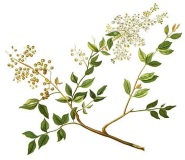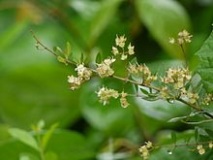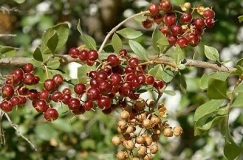- Store
- >
- Medicinal Plants
- >
- 1/2 g Henna seeds, Lawsonia inermis
1/2 g Henna seeds, Lawsonia inermis
Lawsonia inermis is also known as hina, the henna tree, the mignonette tree, and Egyptian privet.
Tropical Perennial (hardy in zones 11+). Temps below 41 F will kill the plant.
The world’s most popular dye plant for thousands of years. A shrubby desert tree or tall shrub native to North Africa and the Middle East, henna has naturalized to areas of similar climate, including Australia and the West Indies.
Leaves from the mature plant are harvested in the summer, dried, crushed and ground to a powder which can be mixed with hot water or lemon juice to make a paste that is applied to hair, nails or skin. A safe and effective hair dye, it covers hair with fiery copper or red tones. It does not damage hair even when used for years, and covers white and grey hair. In the Middle East henna is a traditional part of wedding celebrations, decorating the hands and feet of participants, especially the bride, in beautiful and elaborate golden orange and brown patterns. Such tattoos fade after a few days. It yields shades of orange and tan depending on the mordant used when dyeing cloth.
The white and pink flowers are very fragrant, and are used in the production of perfumes. It grows up to 16 ft, but can be trimmed to create a hedge. Grown as an ornamental in southern California and Florida, it requires full sun, warm temps, and easily withstands drought.
Henna has anti-fungal and anti-bacterial qualities, and is often applied to skin lesions to speed healing.
Note: Persons with G6PD enzyme deficiency or a familial history of such must not use henna, due to potentially harmful reactions.





